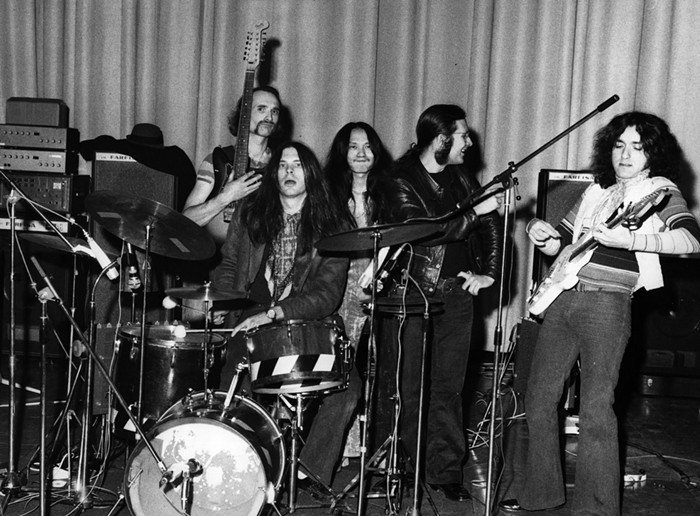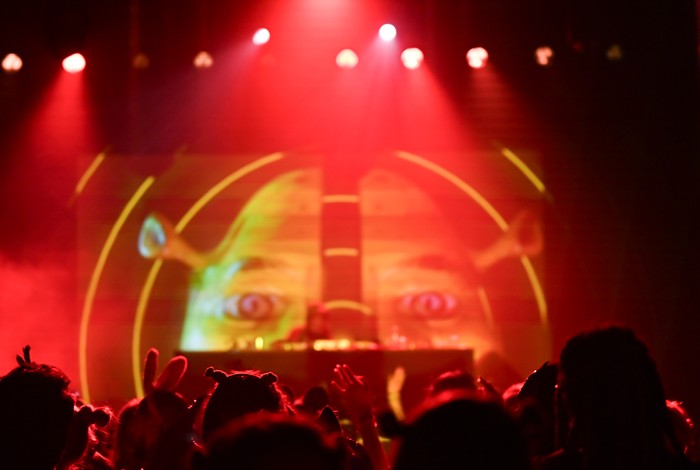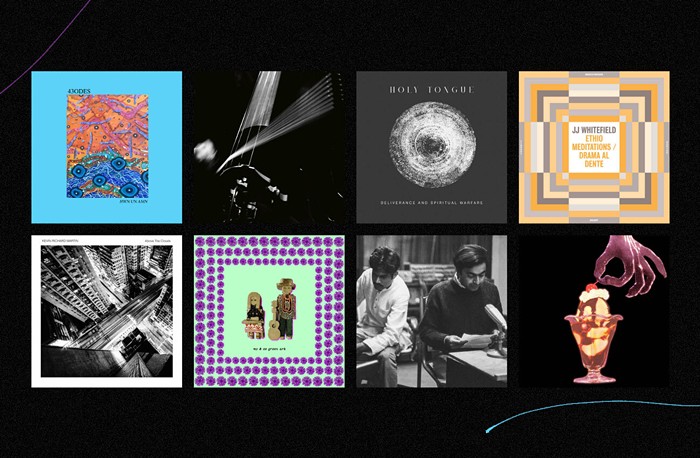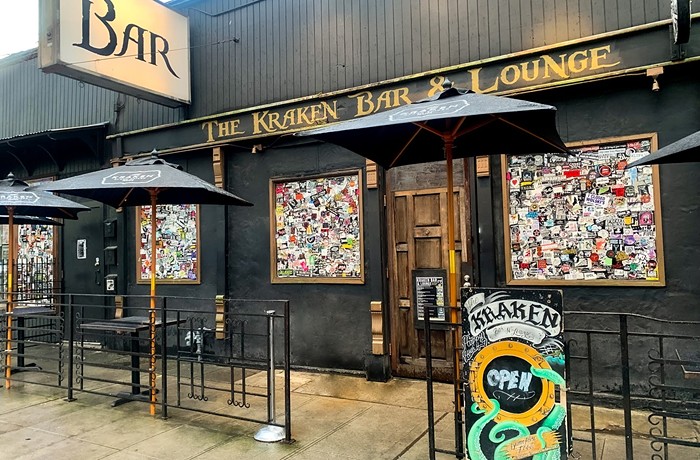w/Aiko Shimada
Tractor Tavern, 789-3599, Fri April 6.
THE BLACK CAT ORCHESTRA
Mysteries Explained
(Irene Records)
***
When I hear the Black Cat Orchestra play--the deep moan of the cello, the resonant huff of the horn, the slightly sinister lilt of the accordion--I find myself longing for Old World things I know only secondhand. For a turn-of-the-century cafe in Vienna, with heavy burgundy drapes and a cup of strong coffee, served with a Sacher torte and a tiny glass of water on the side. For a night walk along the banks of the Bosporus, its backdrop Istanbul's exotic mix of European and what was once called the Orient. For a seedy bar in Weimar Berlin.
It reminds me of the way that Woody Allen uses Gershwin to evoke a New York that doesn't exist (or at least never existed for me in the 24 years I lived there). It's a kind of cinematic, or perhaps theatrical, evocation, unspecific but potent, not quite real but vivid nonetheless. It's not surprising, then, that Black Cat Orchestra grew out of theatrical roots. The duo that forms the group's spine, Kyle Hanson and Lori Goldston, played together in an orchestra for the theater group Run/Remain, along with Don Crevie, who is still with them, and Joseph Zajonc, who no longer plays with the group but is featured on a number of tracks on its new CD, Mysteries Explained.
In its current core incarnation, the Black Cat Orchestra is Goldston on cello, Hanson on accordion, Crevie on horn (what you and I would call French horn, but what horn players call, simply, horn), Scott Granlund on saxophones, Jeff Teitelbaum on standup bass, and Emily Marsh on drums. They are sometimes graced with the presence of Jessika Kenney, a singer trained in gamelan music. The musicians' extracurricular activities tell you a great deal about their depth of skill and the range of their interests. Marsh is formerly of Faster Tiger, and Teitelbaum was with Ensemble Sub Masa; Granlund currently plays with a polka band, and Goldston toured with Nirvana behind In Utero (1993-1994) and appears on MTV's Unplugged with the band.
Their first official gig as the Black Cat Orchestra was for a wedding in 1989, and since then they have certainly expanded the scope of their work. Although they still play lots of weddings, they have also played live scores for silent movies (for Shining Moment Productions, On the Boards, and at Bumbershoot), are featured on David Byrne's album Feelings, and are much in demand for unusual events around Seattle. I've heard them at art openings and office parties, at readings and restaurants (this past winter Hanson and Goldston did a stint of weekly music for diners at the Pink Door), any time the mood needs to be just this side of real, anywhere that a mix of klezmer band and Fellini soundtrack is appropriate.
Mysteries Explained is a mix of found traditional works and original pieces, many of which the group has used for silent-movie scores. The films that the Black Cat Orchestra is often paired with are surrealist classics, such as Antonin Artaud's The Seashell and the Clergyman, in which the challenge is to suggest a mood without imposing a narrative where no narrative belongs. The original works are frankly modern (some percussive, some lyrical, some Miles Davis-jazzy) but still evocative and theatrical; one very short piece by Zajonc, called "With Light at Window," is like an entr'acte: there is a feeling of scenery being changed, of sorrow to come. Predominantly, however, there is a feeling of otherness, especially with the traditional songs. They seem to come from cultures--Balkan, Turkish, Bulgarian--that we know just little enough about to be transported without any of reality's pesky insistence.
There's a lively song called "Bucimis" that must have had an equally lively folk dance to go with it. There's "Introit," a slow, heartbreaking liturgical piece originally written for voices alone. There are boisterous pieces that suggest large families celebrating together, and abstract works that speak to solitude, perhaps self-inflicted. The remarkable thing about Mysteries Explained is that despite this wildly swinging range of styles, the album has a gorgeous unity, a moody rightness that intensifies the more you listen to it. It's the same kind of feeling I get from certain Tom Waits albums: density, emotion, a bit of humor.
Hanson and Goldston do not claim to be ethnomusicologists; they are not of the school that demands that ethnic music be played authentically. Both admire the soundtracks of Ennio Morricone: the genuine, filtered--but not insincerely--through cinema, through kitsch. In fact, it's the band's very sincerity that gives its music both a slightly cheesy edge (which Hanson and Goldston love) as well as its loveliness. It's the kind of music that makes people want to get up and dance the kinds of old dances no one knows the steps to. I've watched these dancers: They're awkward, they're ridiculous, and they're so, so happy.


















